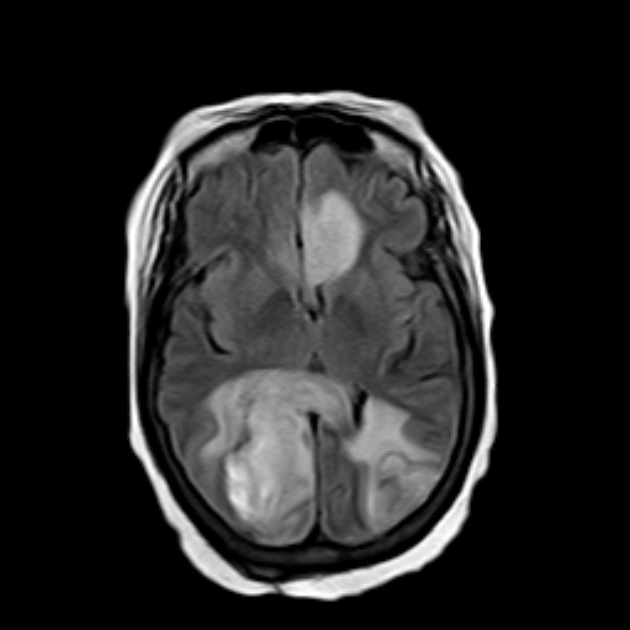Multicentric glioblastomas are uncommon and represent tumors which have multiple discrete areas of contrast-enhancing tumor without connecting T2/FLAIR signal abnormality. They are considered to represent separate synchronous tumors. It must be noted that as imaging has improved, the frequency with which multicentric gliomas have been identified has reduced, as a result of being able to demonstrate connections between enhancing components more readily.
In many cases, the pattern of enhancement strongly suggests that these multiple areas of enhancement actually represent microscopic spread along dominant white matter tracts (e.g. across forceps minor) and, although no bridging abnormally high T2 signal can be seen they thus nonetheless actually represent multifocal tumors rather than being truly multicentric. As such, in practice, the term multicentric should be reserved for tumors with multiple enhancing centers when no connecting high T2 signal is present and the tumors are not in a distribution that suggests a single multifocal tumor.
Differential diagnosis
In contrast, multifocal glioblastomas have connecting T2/FLAIR signal abnormality and represent spread of tumor along white matter tracts.









 Unable to process the form. Check for errors and try again.
Unable to process the form. Check for errors and try again.